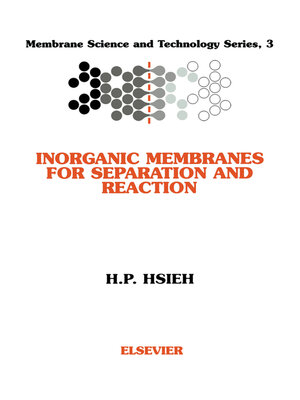Inorganic Membranes for Separation and Reaction
ebook ∣ Membrane Science and Technology
By H.P. Hsieh

Sign up to save your library
With an OverDrive account, you can save your favorite libraries for at-a-glance information about availability. Find out more about OverDrive accounts.
Find this title in Libby, the library reading app by OverDrive.



Search for a digital library with this title
Title found at these libraries:
| Library Name | Distance |
|---|---|
| Loading... |
With the recent advent of commercial ceramic membranes, inorganic membranes are receiving much attention as unique separators and reactors due to their excellent thermal and chemical stabilities. This volume provides an extensive and integrated survey of the science and technology of inorganic membranes.Various methods for making dense metal and solid electrolyte membranes and porous inorganic membranes with tortuous and nearly straight pores are provided. These inorganic membranes, ranging from ceramics to metals to inorganic polymers, can be characterized by many techniques indicative of their separation performance under idealized as well as application conditions. In addition to many commercial liquid-phase applications, inorganic membranes have been used industrially for gas diffusion and particle filtration and demonstrated for the important high-temperature gas separation and membrane reactor applications. Approximately half of the book is devoted to the subject of inorganic membrane reactors. Useful data in many tables and figures and extensive literature and patent information are given throughout the book for further study.The book is a valuable reference for researchers as well as process engineers who are involved in membrane and separation technology. Chemical engineers, chemists and material scientists should also find the text a comprehensible introduction to the subject.







